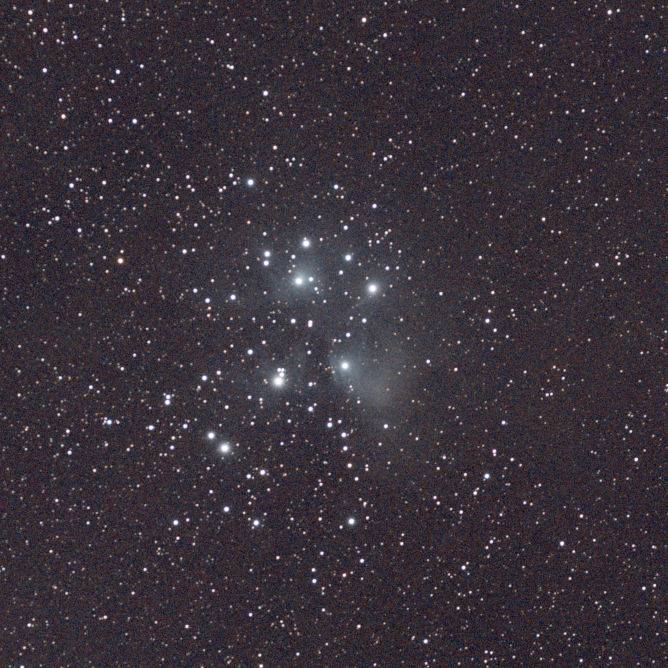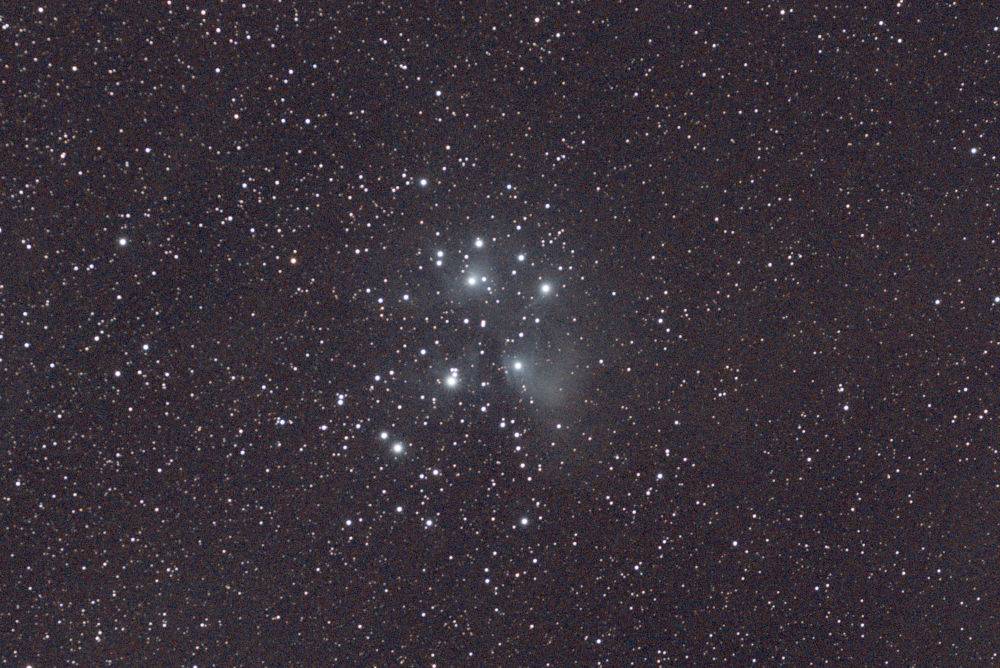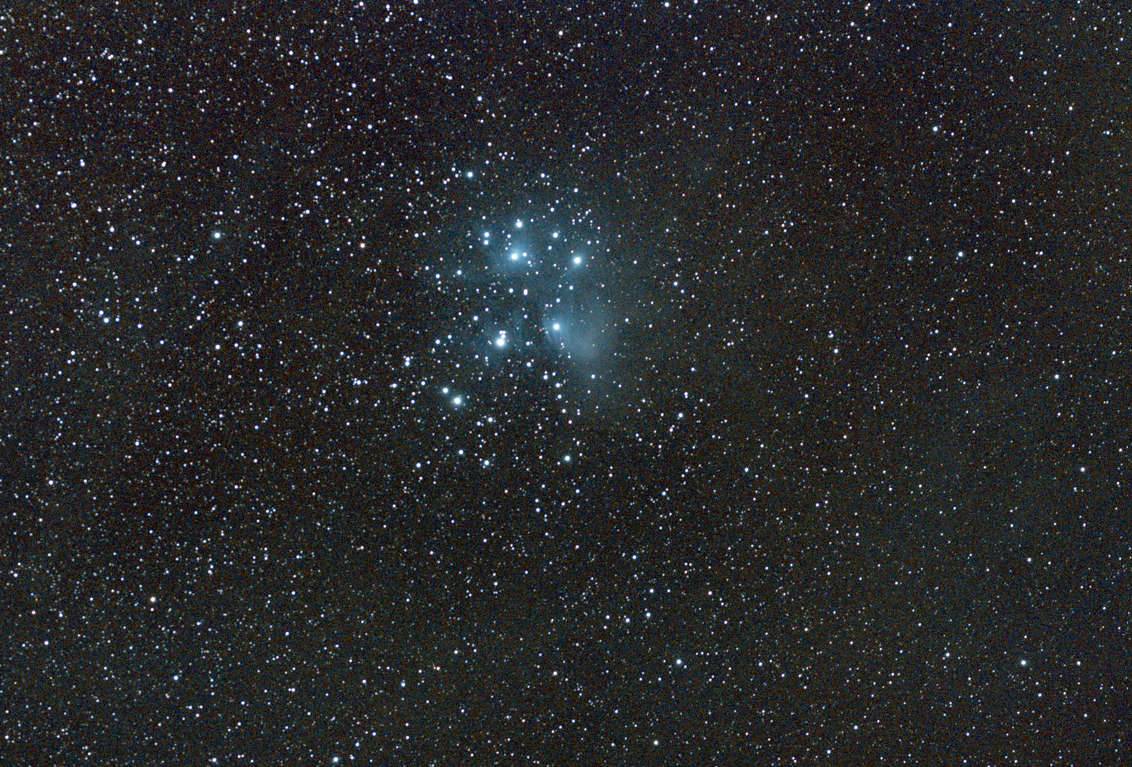
Well, the conditions were far from ideal, but a brief window of clear skies materialized which gave me an opportunity to get out and shoot the Pleiades. To say it was cold would be an understatement. The thermometer was tipping South of -12 C this evening. I was considering getting the Lego Star Tracker out, but the cold was simply too bitter.
Rather, I decided to try to set up my camera outside and wirelessly image from inside using the method I wrote about previously. I knew I’d have to walk outside and adjust the camera every 10 minutes or so. But this was certainly better than freezing! I also wanted to test how the camera would react to the cold temperatures.
Setting Up On The Back Porch
I went with the Samyang 135mm f/2 and wrapped my dew heater around the lens. I knew this would interfere a bit with focusing, but I thought I’d be fine. Turns out I was right in this regard. Next, I lined up the Pleiades in my camera live view. Finally, I connected to the camera via WiFi and fired up the Astro Photography Tool (APT) program. Worked like a charm.
I set up at f/2.8 and an ISO of 6400. My goal was to take as many 1-second exposures as I could tonight. I had pretty good results with f/2 before, and I wanted to see a comparison at f/2.8. So after getting set up, I left nature’s freezer and headed back inside. I edited my shooting plan to take 50 photos at a time so I could monitor when I’d need to readjust the camera position.
After a couple of runs, I determined I could take about 150 photos before I’d need to reframe the Pleiades. By the time I got to about 800 photos, my 32Gb camera card was just about full. I wanted to leave a little space to take dark and flat frames so I went ahead and did that.
With the imaging done, I went outside and broke down my setup. I left the dew heater running on the lens and wrapped the whole camera in a plastic bag. I wanted to ensure that when I brought the camera back in, the moisture in the house wouldn’t immediately condense on the camera. After about an hour I took the camera out and started downloading the pictures.
Processing the Pleiades Photos
Well, turns out I got a little rusty after not getting out in such a long time. In all the excitement of finally having clear skies again to image the Pleiades, I forgot to properly set the ISO when I took my flat frames. Doh! So when I processed everything in Deep Sky Stacker, I had to forego processing with flats. Not a big deal, just a brain freeze – literally.
I processed 800 light frames and it took about 2 hours to complete. Below you’ll see the result on the left alongside the first image I shot of the Pleiades for comparison.

| 
|
| Canon EOS 250D – f/2.8, ISO 6400, Exp 800 x 1s, Post – DSS, Siril, GIMP | Canon EOS 250D – f/2, ISO 6400, Exp 600 x 1s, Post – DSS, Siril, GIMP |
Comparing Results
As you can see, at f/2, I captured a lot more detail with a lot less imaging time. The colors were also better during my first imaging session but I chalk that up more to the atmospheric conditions than anything.
I will say this for my session this evening – it was a lot easier to focus the Samyang 135mm lens at f/2.8 as opposed to f/2. I had a little more room to adjust on the focus ring.
All in all, I was just happy to be able to get out this evening. It was worth the time and effort to try a few new things in practice and all things considered, I’m satisfied with the results. Hopefully there will be more clear skies in the future so I can get out and tackle something other than the Pleiades.
